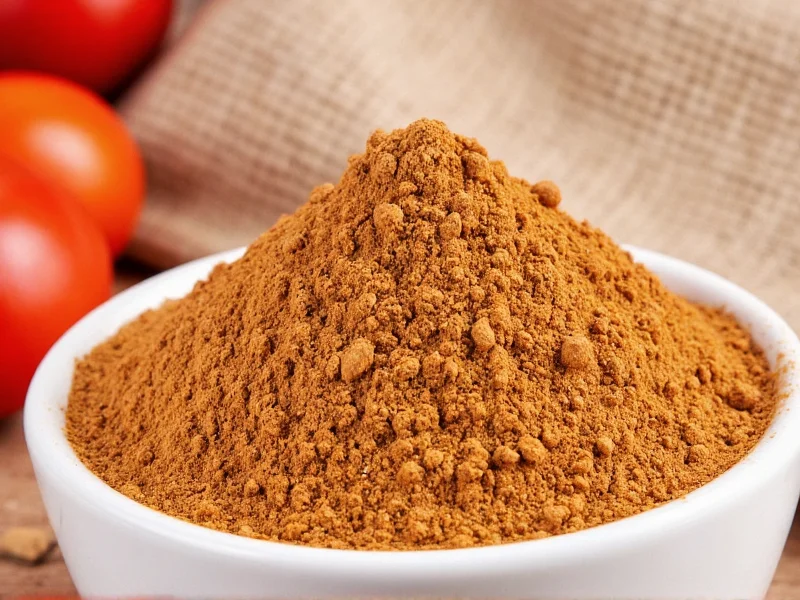When you're in the middle of cooking and realize you're out of chipotle powder, knowing reliable alternatives can save your recipe. This smoky, medium-heat chili powder adds distinctive flavor to Mexican and Southwestern dishes, but several pantry staples can effectively stand in for it when needed.
Understanding Chipotle Powder's Unique Flavor Profile
Chipotle powder comes from smoked and dried jalapeño peppers, giving it a distinctive combination of heat (medium on the Scoville scale) and deep smokiness. Unlike regular chili powder blends, authentic chipotle powder contains only ground chipotle peppers without additional spices. This singular flavor profile makes substitution challenging but not impossible.
Top 5 Substitutes for Chipotle Powder
| Substitute | Ratio | Best For | Limitations |
|---|---|---|---|
| Smoked paprika + cayenne | 1 tsp smoked paprika + 1/8 tsp cayenne per 1 tsp chipotle | Most recipes requiring smokiness | Lacks earthy notes of chipotle |
| Ancho chili powder | 1 1/4 tsp per 1 tsp chipotle | Soups, stews, mole sauces | Milder heat, less smoky |
| Chipotle peppers in adobo | 1 pepper minced = 1 tsp powder | Sauces, marinades, wet dishes | Adds moisture to recipes |
| Cayenne + regular paprika | 3/4 tsp paprika + 1/4 tsp cayenne | Dry rubs when smoked paprika unavailable | No smokiness |
| Homemade chipotle blend | See recipe below | When planning ahead | Requires preparation time |
Detailed Substitute Analysis
Smoked Paprika with Cayenne Pepper
This combination delivers the closest approximation to chipotle powder's signature smokiness with appropriate heat. Smoked paprika provides the essential smoky element while cayenne adds the necessary kick. This best substitute for chipotle powder in recipes maintains the complex flavor profile without introducing competing flavors. For recipes where smokiness matters most—like barbecue rubs or bean dishes—this pairing works exceptionally well.
Ancho Chili Powder Alternative
Ancho powder comes from dried poblano peppers and offers a similar earthy depth with mild heat. While it lacks the distinctive smoke flavor, it provides comparable fruitiness and complexity. Use 1 1/4 teaspoons of ancho powder for every teaspoon of chipotle powder called for. This substitution works particularly well in mole sauces and chocolate-based chili recipes where the subtle fruit notes complement other ingredients.
Fresh Chipotle Peppers in Adobo Sauce
When you need a chipotle powder alternative for wet recipes, minced chipotle peppers in adobo provide authentic flavor with added moisture. One finely minced pepper equals approximately one teaspoon of powder. This option delivers the genuine smoky-spicy profile but introduces liquid and additional flavors from the adobo sauce (vinegar, garlic, spices). Best for sauces, marinades, and braises where the extra moisture won't affect texture.
Substitution Guidelines by Recipe Type
Not all substitutes work equally well across different dishes. Consider these recommendations when choosing your chipotle powder replacement:
- Dry rubs: Smoked paprika/cayenne blend maintains texture while delivering flavor
- Soups and stews: Ancho powder or chipotle in adobo (minced)
- Salsas and sauces: Chipotle peppers in adobo (minced) for authentic flavor
- Baking applications: Smoked paprika/cayenne (avoid moisture from adobo)
- Vegetable dishes: Ancho powder for milder flavor that won't overpower
Creating Your Own Chipotle Powder Substitute
If you have time to prepare a more authentic alternative, try this homemade blend:
- Toast 2 dried chipotle peppers (or 1 large) in a dry skillet for 30 seconds
- Remove stems and seeds
- Grind to fine powder in spice grinder
- Store in airtight container for up to 6 months
This method produces the most authentic chipotle powder alternative when you have dried peppers available. For a quicker solution, combine 2 teaspoons smoked paprika, 1/2 teaspoon cumin, 1/4 teaspoon garlic powder, and 1/8 teaspoon cayenne pepper.
What Not to Use as Substitutes
Certain common pantry items make poor chipotle powder alternatives:
- Regular chili powder: Contains multiple spices that alter flavor balance
- Hot sauce: Adds unwanted vinegar and liquid
- Cayenne alone: Provides heat but no smokiness
- Regular paprika: Lacks both heat and smokiness
Understanding these limitations helps prevent disappointing results when you need a reliable chipotle powder replacement in your cooking.
Final Considerations for Successful Substitution
The best substitute for chipotle powder depends on your specific recipe and available ingredients. Always consider whether smokiness or heat matters more in your dish. For most applications, the smoked paprika and cayenne combination delivers the most versatile chipotle powder alternative. When possible, taste as you go—adding gradually until you achieve the desired flavor profile. Remember that homemade substitutes may require slight adjustments to other seasonings in your recipe to maintain balance.











 浙公网安备
33010002000092号
浙公网安备
33010002000092号 浙B2-20120091-4
浙B2-20120091-4